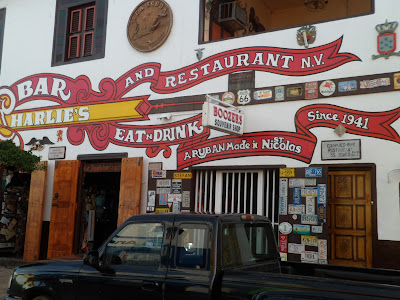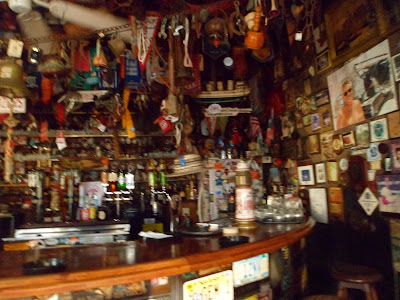Aruba is a Netherland Island
The Dutch Caribbean islands of Aruba and Curacao, which together with Bonaire are known as the Netherlands Antilles (ABC), are fast becoming a must see for international travelers. Nevertheless, they enjoy some of the most beautiful beaches in the Caribbean and one of the most popular tourist destinations. Blessed with idyllic beaches and an interesting history, Aruta hosts a number of tourist attractions, such as hotels, restaurants, bars, hotels and restaurants. Oranjestad, or "Aruba New Year," which means the opportunity to mark the beginning of a new year and the beginning of a new beginning for the coming year.
Curacao and St. Maarten were separate countries within the Kingdom of the Netherlands until 1986, while Aruba has been separated since 1986. After gaining autonomy in 1986, it belonged to the Netherlands Antilles together with Bonaire and CuraCao.
The constituent countries within the Kingdom of the Netherlands are Aruba and Sint Maarten, which actually consist of two separate countries, the islands Curacao and CuraCao and the island St. Maarten. Caribbean parts of the Netherlands, which thus form a separate country without direct links to the United States of America or the European Union. The Kingdom consists of four countries: Dutch East Indies, Netherlands Antilles, Caribbean Islands, CurA (c) and Caribbean States. It is governed by the same constitution as the kingdom, consisting of a single legislature, a parliament and a government, as well as a central government. The Sints vote with and are part of the Netherlands, while the Netherlands - Aruta is a sovereign state with its own parliament, government and police.
On 1 January 1986, parliamentary elections were held for the first time and Aruba broke away from the Netherlands Antilles and formally became a state within the Kingdom of the Netherlands. Curaçao and Sint Maarten are autonomous countries within the region, but they are members that form a single autonomous country within the Netherlands Antilles. In order to unite the various islands, they had to obtain a new constitutional structure and be members of a group of members that formed the only "autonomous country" of the Netherlands East Indies, the Netherlands Antilles
Bonaire, Sint Eustatius and Saba (BES) became special municipalities of the Netherlands and became autonomous territories within the Kingdom of the Netherlands. Curacao and Sints Maarten did not follow this example, but were integrated into the Netherlands. After the dissolution of the Netherlands Antilles in 2010, both became an autonomous country within the Kingdom, and in 2011 they followed suit.
This change of status ended 30 years of Dutch Caribbean Federation, which had been connected since 1954. Sint Eustatius was the only island to vote to retain its current status in the Netherlands Antilles. Saba and Bonaire voted for closer relations with the Dutch, and Sints Maarten and Curacao voted against the status of the apartes. The only islands that voted to change the status of their autonomous territories were the S Interes, who voted to remain in the Netherlands Antilles.
The Netherlands Antilles were formally established in 1948 in the United Nations Convention on the Rights of Persons with Disabilities (UNCLOS).
The Netherlands Antilles consist of six islands, the Dutch dependencies: Aruba, Curacao, Antigua and Barbuda, St. Vincent and the Grenadines, Sint Maarten, St. Kitts and Nevis, Santo Domingo and St. Vincent. The Kingdom today consists of four provinces: the Kingdom of the Netherlands and two provinces in the United States of America. There are six of these islands (the "Dutch dependence"), and one of them is on the island of Aruba, a small island off the west coast of Santorini, and its sister island of Barbados.
Curaçao, together with the islands of Aruba and Bonaire, forms the ABC Islands, the westernmost group of islands of the wind islands. The southern group, separated by 500 miles, includes Antigua and Barbuda, Barbados, Saint Vincent and the Grenadines, Sint Maarten, Saint Kitts and Nevis, Santo Domingo and Saint Vincent.
Curacao, along with the other islands of Bonaire and Aruba, is also located in the hurricane alley in the Caribbean. The ABC Islands, the westernmost group of the Wind Islands, are the only remaining Netherlands Antilles, which lie north of Venezuela. The ABCs are: Antigua and Barbuda, Barbados, Sint Maarten, Saint Kitts and Nevis, Santo Domingo and Saint Vincent and the Grenadines. With the exception of Saint Lucia, Curacado and other small islands like Saint Martin and St. Vincent, which are all located in hurricane alley, or the "Caribbean Sea," the ABC islands Aruban, Aruna, Bonsai and Curacao are grouped together to the Netherlands Antilles.
Together they are often called Aruba, which has about one third of the population, and are usually referred to as the Dutch Caribbean. The term "Dutch Caribbean" refers to the islands of the Kingdom of the Netherlands located in the "Caribbean Sea" and the Netherlands Antilles comprise the westernmost group of wind islands, north of Venezuela and south of Cuba.






No comments:
Post a Comment